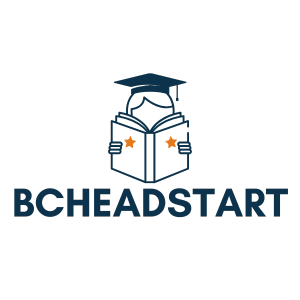In the ever-evolving world of education, pedagogy teaching methods are the secret sauce that can turn a mundane classroom into a vibrant learning hub. Imagine a place where students don’t just sit and stare at the clock but are actively engaged, curious, and maybe even laughing a little. That’s the magic of effective teaching methods.
From traditional lectures to interactive group work, the right approach can transform how knowledge is shared and absorbed. It’s not just about filling heads with facts; it’s about sparking interest and inspiring creativity. So whether you’re a seasoned educator or just dipping your toes into the teaching pool, mastering these methods can make a world of difference. Let’s dive into the fascinating landscape of pedagogy and discover how to make learning not just effective but also enjoyable.
Table of Contents
ToggleUnderstanding Pedagogy Teaching Methods
Effective pedagogy teaching methods focus on enhancing student engagement and fostering a love for learning. Various strategies address the diverse needs of learners, encouraging participation and creativity. Active learning methods, such as collaborative projects and group discussions, promote critical thinking while allowing students to apply concepts practically.
Experiential learning encourages students to gain knowledge through experiences. Techniques like role-playing and simulations serve to immerse students in real-world scenarios, making theoretical knowledge relevant. Additionally, inquiry-based learning emphasizes curiosity and exploration; students ask questions and seek answers, thereby developing problem-solving skills.
Differentiated instruction responds to the varying abilities and learning styles within a classroom. By tailoring methods, educators ensure that every student receives the appropriate level of challenge and support. This approach might involve using varied materials or adjusting tasks based on students’ proficiency levels.
Technology integration enhances learning experiences significantly. Digital tools enable interactive lessons, facilitate access to resources, and promote collaboration beyond classroom walls. Educators utilizing online platforms and multimedia can enhance motivation and broaden learning opportunities.
Lastly, culturally responsive teaching recognizes the importance of students’ backgrounds and experiences. By incorporating diverse perspectives and culturally relevant materials, educators create an inclusive environment that respects all students. Addressing these different pedagogical methods enriches educational experiences, ultimately leading to better learning outcomes.
Types of Pedagogy Teaching Methods

Pedagogy encompasses a variety of teaching methods, each tailored to enhance student learning effectively. Understanding these methods leads to improved educational experiences.
Traditional Teaching Methods
Traditional teaching methods focus on direct instruction. This approach often includes lectures where the teacher delivers information to students. Assessment and standardized tests frequently characterize these classrooms. Teachers primarily control the flow of information, while students respond passively. Often, rote memorization plays a significant role in learning. This method may suit subjects that require foundational knowledge but lacks interactive engagement.
Progressive Teaching Methods
Progressive teaching methods prioritize student engagement. Active learning techniques encourage participation through discussions and group work. Inquiry-based learning promotes curiosity, allowing students to explore topics based on their interests. Collaborative projects enable students to develop skills like teamwork and problem-solving. Teachers act more as facilitators than lecturers, guiding students in their learning journeys. This approach addresses diverse learning styles and fosters creativity, resulting in a more dynamic classroom environment.
Implementing Pedagogy in the Classroom
Effective pedagogy enhances classroom dynamics. Educators play a crucial role in facilitating this transformation.
Planning Effective Lessons
Well-structured lessons align with teaching goals and student needs. Creating clear objectives fosters focus during each session. Incorporating diverse teaching methods appeals to different learning styles. Teachers often utilize materials that stimulate interest and participation. Integrating formative assessments helps gauge understanding and adapt instruction. Time management remains essential; balancing activities ensures all content is covered without overwhelming students.
Engaging Students in Learning
Engagement strategies ignite enthusiasm among students. Active discussions encourage participation while promoting critical thinking. Hands-on activities reinforce concepts through real-life applications. Group projects enhance collaboration, fostering social skills alongside academic development. Utilizing technology makes lessons interactive; tools like quizzes or simulations capture student attention. Creating a supportive atmosphere allows students to express their ideas freely, enhancing overall engagement and motivation.
Assessing the Impact of Teaching Methods
Assessing the impact of teaching methods involves examining student engagement, retention rates, and academic performance. Utilizing both quantitative and qualitative data helps educators measure effectiveness accurately. Surveys and interviews provide insights into students’ perceptions of various pedagogical strategies.
Engagement metrics can include participation rates in class discussions and the completion of assignments. Research shows that active learning methods lead to higher engagement levels, promoting critical thinking. Group projects and hands-on activities sort as effective strategies reflecting improved student collaboration and enthusiasm.
Retention rates serve as another indicator of methodology success. Studies illustrate that students exposed to experiential learning approaches retain information longer than those relying solely on traditional lectures. This demonstrates the necessity of adapting teaching practices for long-term understanding.
Academic performance is typically evaluated through grades and standardized test scores. Data suggests that inquiry-based learning results in better academic outcomes compared to rote memorization. Students immersed in problem-solving scenarios tend to outperform peers taught through conventional methods.
Differentiated instruction remains crucial for assessing diverse learning needs. Tailored teaching strategies enhance the learning experience for students with varying abilities. Educators should adapt their methods to ensure every student feels challenged yet supported.
Finally, incorporating technology facilitates real-time feedback on teaching effectiveness. Interactive platforms allow students to express their understanding in innovative ways. Continuous assessment and reflection on teaching methods guarantee educators refine their approaches, ultimately benefiting student learning.
Effective pedagogy teaching methods are essential for creating vibrant learning environments that inspire students. By embracing diverse strategies like active learning and differentiated instruction, educators can engage students in meaningful ways. Incorporating technology and culturally responsive practices further enriches the educational experience, making learning relevant and inclusive.
The shift from traditional to progressive methods not only enhances student engagement but also fosters critical thinking and creativity. As educators explore and implement these innovative approaches, they contribute to a more dynamic classroom atmosphere. Ultimately, prioritizing effective pedagogy ensures that all students have the opportunity to thrive academically and personally.

